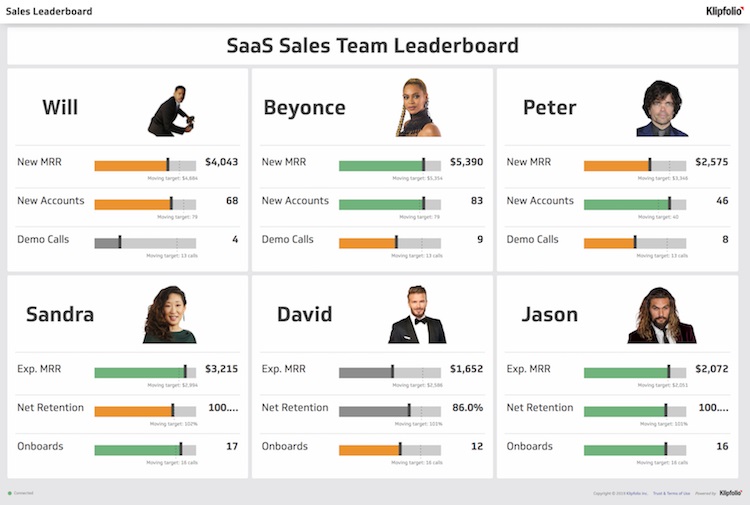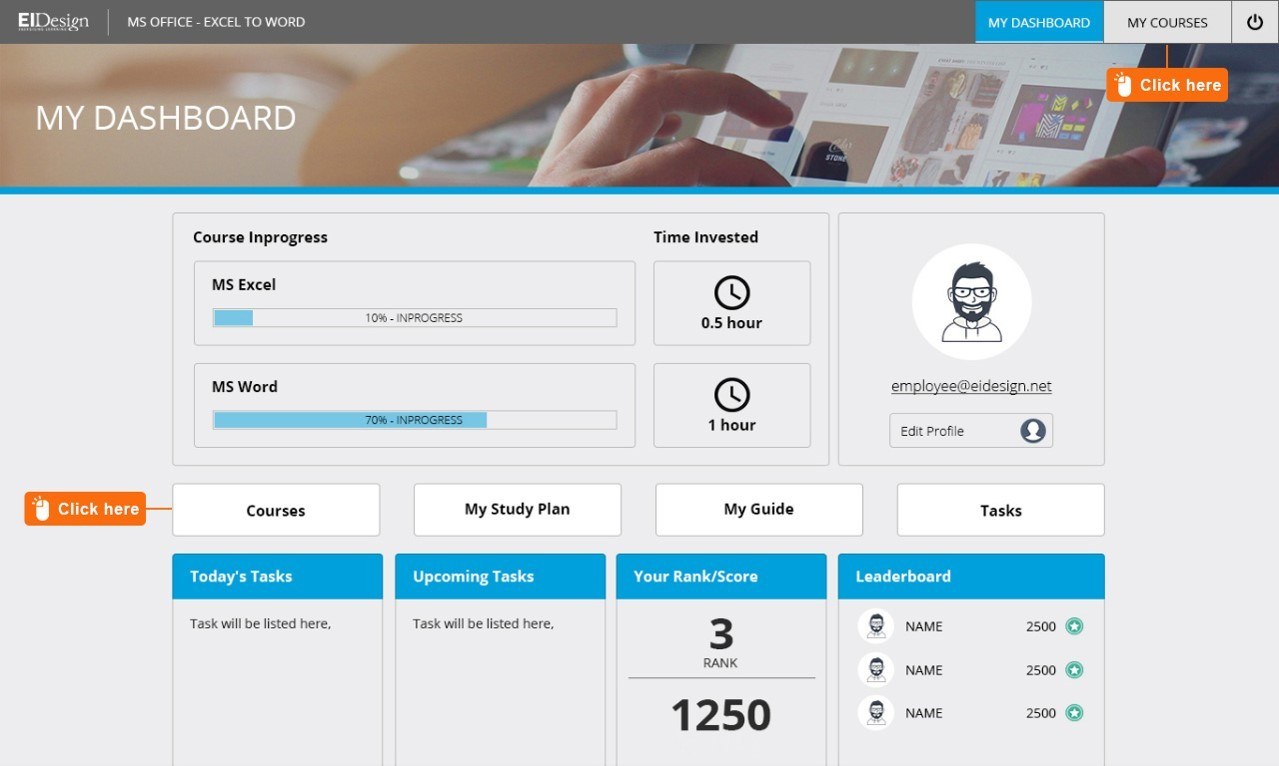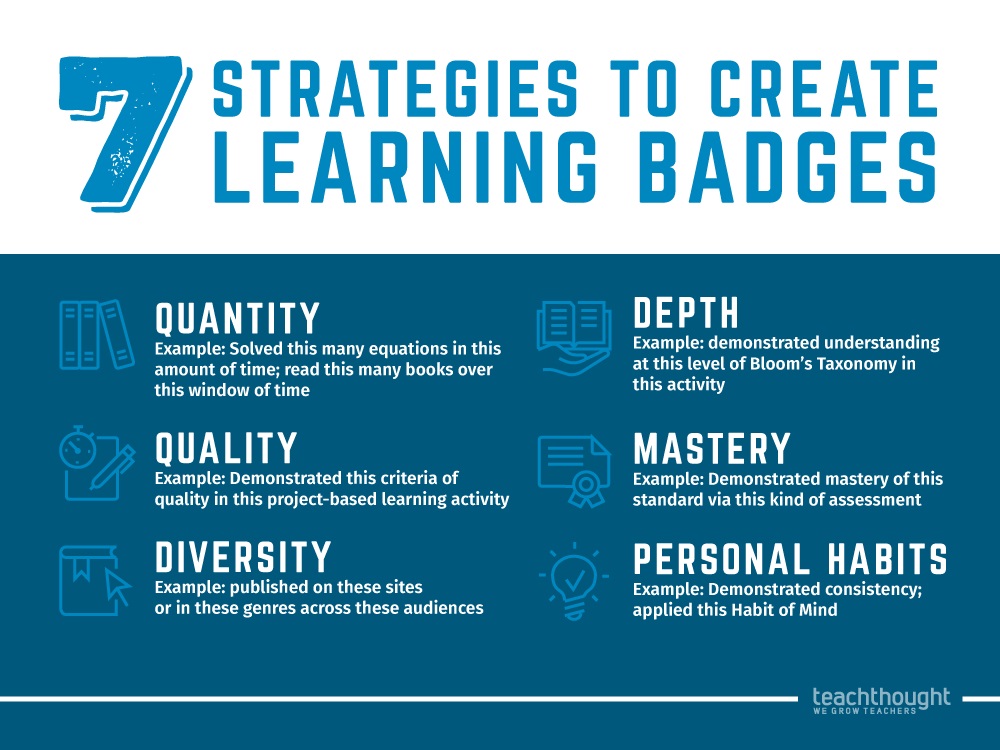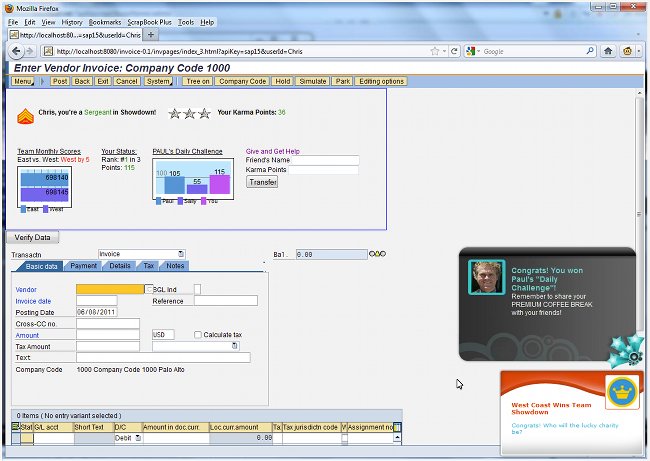The Weirdest Ideas Big Business Has Stolen From Gamers
PocketEpiphany
Published
07/05/2021
in
wow
Not that long ago, it was common for bored workers to sneak game time in at work. This sneaky activity could range from smuggling in a Nintendo DS to goofing around on the company computer.
Now, however, CEOs and managers have brought gaming into the workplace to create better employees. And here are the weirdest “gamification” ideas they st
- List View
- Player View
- Grid View
-
1.
 Interactive Training https://kitaboo.com/creating-interactive-training-modules/ One video game issue that never went away entirely is unskippable cutscenes. Players must sit, bored out of their minds, until the scene is over. This is why many modern developers added interactive exposition to games. This is where you must click through dialogue choices and, usually, verify that you understood what you just read. Adding that tiny level of interaction is enough to make gamers feel engaged instead of bored. And company training managers borrowed this idea long ago to create interactive compliance training and other kinds of training, replacing the “sit and get” training videos of yesteryear.
Interactive Training https://kitaboo.com/creating-interactive-training-modules/ One video game issue that never went away entirely is unskippable cutscenes. Players must sit, bored out of their minds, until the scene is over. This is why many modern developers added interactive exposition to games. This is where you must click through dialogue choices and, usually, verify that you understood what you just read. Adding that tiny level of interaction is enough to make gamers feel engaged instead of bored. And company training managers borrowed this idea long ago to create interactive compliance training and other kinds of training, replacing the “sit and get” training videos of yesteryear. -
2.
 High Scores Are the New Assessments https://www.klipfolio.com/resources/dashboard-examples/sales/sales-leaderboard Most jobs involve some kind of annual assessment. At the end of the year, your supervisor lets you know what went right, what went wrong, and what you need to work on. However, there is a constant need for quicker assessments of employee performance. This is why companies with explicit goals (such as making a certain number of sales) have started adding things like leaderboards. Just as employees once fought for the high score in their local arcade, they now must compete for the top spot at work. And it is obvious when someone’s performance is falling behind if they end up slipping down the leaderboard, allowing for immediate intervention by management.
High Scores Are the New Assessments https://www.klipfolio.com/resources/dashboard-examples/sales/sales-leaderboard Most jobs involve some kind of annual assessment. At the end of the year, your supervisor lets you know what went right, what went wrong, and what you need to work on. However, there is a constant need for quicker assessments of employee performance. This is why companies with explicit goals (such as making a certain number of sales) have started adding things like leaderboards. Just as employees once fought for the high score in their local arcade, they now must compete for the top spot at work. And it is obvious when someone’s performance is falling behind if they end up slipping down the leaderboard, allowing for immediate intervention by management. -
3.
 Progress Bars As Experience Points https://elearningindustry.com/5-examples-gamification-in-corporate-training-beyond-badges-leaderboards Leaderboards are a handy tool, but they can only provide so much information. For example, tracking how many sales someone has made in a given month doesn’t actually track their progress towards other goals. This is why many modern companies have added “progress bars” to individual employee dashboards. These bars usually line up with an employee’s KPIs (key performance indicators) assignment by management. So a bank CSR might have goals that include product sales, opening new accounts, and client troubleshooting. By assigning those goals a point value and giving the employee a target score, managers can use progress bars to quickly see where an employee stands.
Progress Bars As Experience Points https://elearningindustry.com/5-examples-gamification-in-corporate-training-beyond-badges-leaderboards Leaderboards are a handy tool, but they can only provide so much information. For example, tracking how many sales someone has made in a given month doesn’t actually track their progress towards other goals. This is why many modern companies have added “progress bars” to individual employee dashboards. These bars usually line up with an employee’s KPIs (key performance indicators) assignment by management. So a bank CSR might have goals that include product sales, opening new accounts, and client troubleshooting. By assigning those goals a point value and giving the employee a target score, managers can use progress bars to quickly see where an employee stands. -
4.
 Badges As Achievements https://www.teachthought.com/pedagogy/7-innovative-strategies-to-create-learning-badges/ Perhaps the most direct video game idea stolen by big businesses is the use of badges. Corporate badges are basically like video game achievements that offer a few other perks. Badges can be awarded by a company for just about anything. This includes completing certain training requirements, passing certain assessments, or simply doing well on an annual review. These badges come in digital forms and can usually be submitted as part of a job application. And just as major achievements help players identify expert gamers, important badges help recruiters and hiring managers instantly spot top talent.
Badges As Achievements https://www.teachthought.com/pedagogy/7-innovative-strategies-to-create-learning-badges/ Perhaps the most direct video game idea stolen by big businesses is the use of badges. Corporate badges are basically like video game achievements that offer a few other perks. Badges can be awarded by a company for just about anything. This includes completing certain training requirements, passing certain assessments, or simply doing well on an annual review. These badges come in digital forms and can usually be submitted as part of a job application. And just as major achievements help players identify expert gamers, important badges help recruiters and hiring managers instantly spot top talent. -
5.
 Different Mastery Achievements https://thegamificationreport.blogspot.com/2017/12/new-sententia-gamification-digital.html These days, achievements and trophies in video games have different values. For example, getting a platinum trophy for a PlayStation game indicates your mastery of that particular title. On a similar note, plenty of modern businesses took the basic badging concept and added badges requiring different levels of skill or achievement. This had two positive outcomes, the first being that when badges are harder to get, employees are forced to master more complex skills. The second is that high-level badges promote a high level of achievement (no pun intended) in corporate offices. And proud employees can evil display those digital badges on social media to brag about their achievements.
Different Mastery Achievements https://thegamificationreport.blogspot.com/2017/12/new-sententia-gamification-digital.html These days, achievements and trophies in video games have different values. For example, getting a platinum trophy for a PlayStation game indicates your mastery of that particular title. On a similar note, plenty of modern businesses took the basic badging concept and added badges requiring different levels of skill or achievement. This had two positive outcomes, the first being that when badges are harder to get, employees are forced to master more complex skills. The second is that high-level badges promote a high level of achievement (no pun intended) in corporate offices. And proud employees can evil display those digital badges on social media to brag about their achievements. -
6.
 Unconventional Manager Recruitment https://www.youtube.com/watch?v=6oIp9w1r6X0 The idea of video games as a recruitment tool isn’t really new. However, in recent decades, most video game recruitment has been through military games. The military funds these games that glorify life as a soldier and end up getting that many more recruits. However, some companies are trying something new. About a decade ago, Siemens took the FarmVille concept and launched a social game called PlantVille. This is a game that simulates being the manager of a chaotic manufacturing plant who must find creative solutions to various manufacturing problems. The CEO of Siemens expressed hope that it would teach those who played about the KPIs of manufacturing. And in this way, he gave thousands of gamers management training to help influence their future careers.
Unconventional Manager Recruitment https://www.youtube.com/watch?v=6oIp9w1r6X0 The idea of video games as a recruitment tool isn’t really new. However, in recent decades, most video game recruitment has been through military games. The military funds these games that glorify life as a soldier and end up getting that many more recruits. However, some companies are trying something new. About a decade ago, Siemens took the FarmVille concept and launched a social game called PlantVille. This is a game that simulates being the manager of a chaotic manufacturing plant who must find creative solutions to various manufacturing problems. The CEO of Siemens expressed hope that it would teach those who played about the KPIs of manufacturing. And in this way, he gave thousands of gamers management training to help influence their future careers. -
7.
 Boring Work Turned Into Quests Here’s an open secret: gamification can only take a company so far. Some jobs are downright boring, but companies hope to make them sound a bit more exciting. For example, the Data Scrubbers team tried to turn the dry activity of scrubbing data into a fun game. Players level up based on both how much data they scrub and the complexity of that data, with overall performance of players tied to individual progress bars. In many ways, this attempt to mask boring jobs as something fun mimics things like escort missions and fetch quests in video games. Deep down, we all know those activities boil down to “walk 100 feet” and/or “fight a bunch of crappy enemies.” But just as the games try to make these quests sound exciting and cool, modern corporations are hoping to turn their computer janitors into l33t gamers motivated to succeed.
Boring Work Turned Into Quests Here’s an open secret: gamification can only take a company so far. Some jobs are downright boring, but companies hope to make them sound a bit more exciting. For example, the Data Scrubbers team tried to turn the dry activity of scrubbing data into a fun game. Players level up based on both how much data they scrub and the complexity of that data, with overall performance of players tied to individual progress bars. In many ways, this attempt to mask boring jobs as something fun mimics things like escort missions and fetch quests in video games. Deep down, we all know those activities boil down to “walk 100 feet” and/or “fight a bunch of crappy enemies.” But just as the games try to make these quests sound exciting and cool, modern corporations are hoping to turn their computer janitors into l33t gamers motivated to succeed.
- NEXT GALLERY
-

- 37 Fresh Memes of the Dankest Kind
Interactive Training https://kitaboo.com/creating-interactive-training-modules/ One video game issue that never went away entirely is unskippable cutscenes. Players must sit, bored out of their minds, until the scene is over. This is why many modern developers added interactive exposition to games. This is where you must click through dialogue choices and, usually, verify that you understood what you just read. Adding that tiny level of interaction is enough to make gamers feel engaged instead of bored. And company training managers borrowed this idea long ago to create interactive compliance training and other kinds of training, replacing the “sit and get” training videos of yesteryear.
7/7
1/7
Categories:
Wow








2 Comments